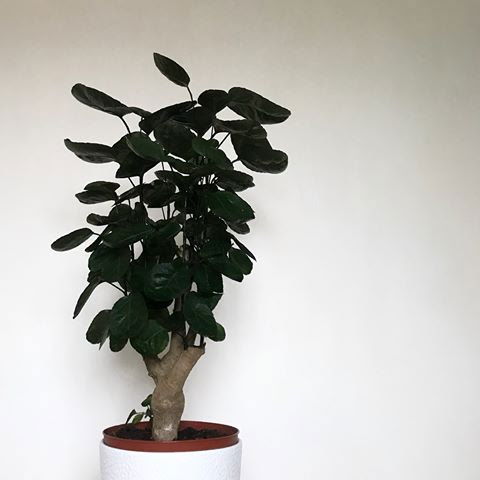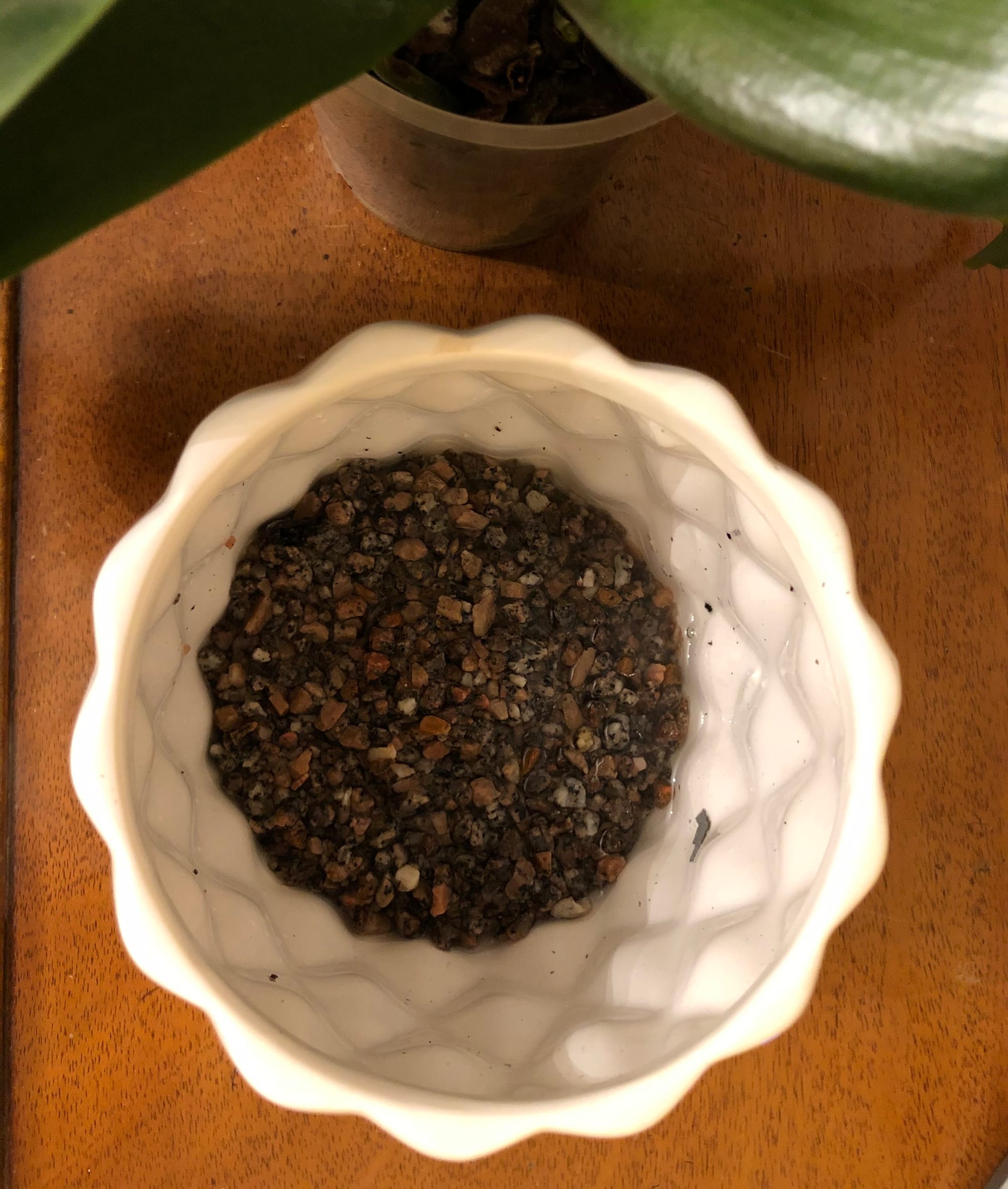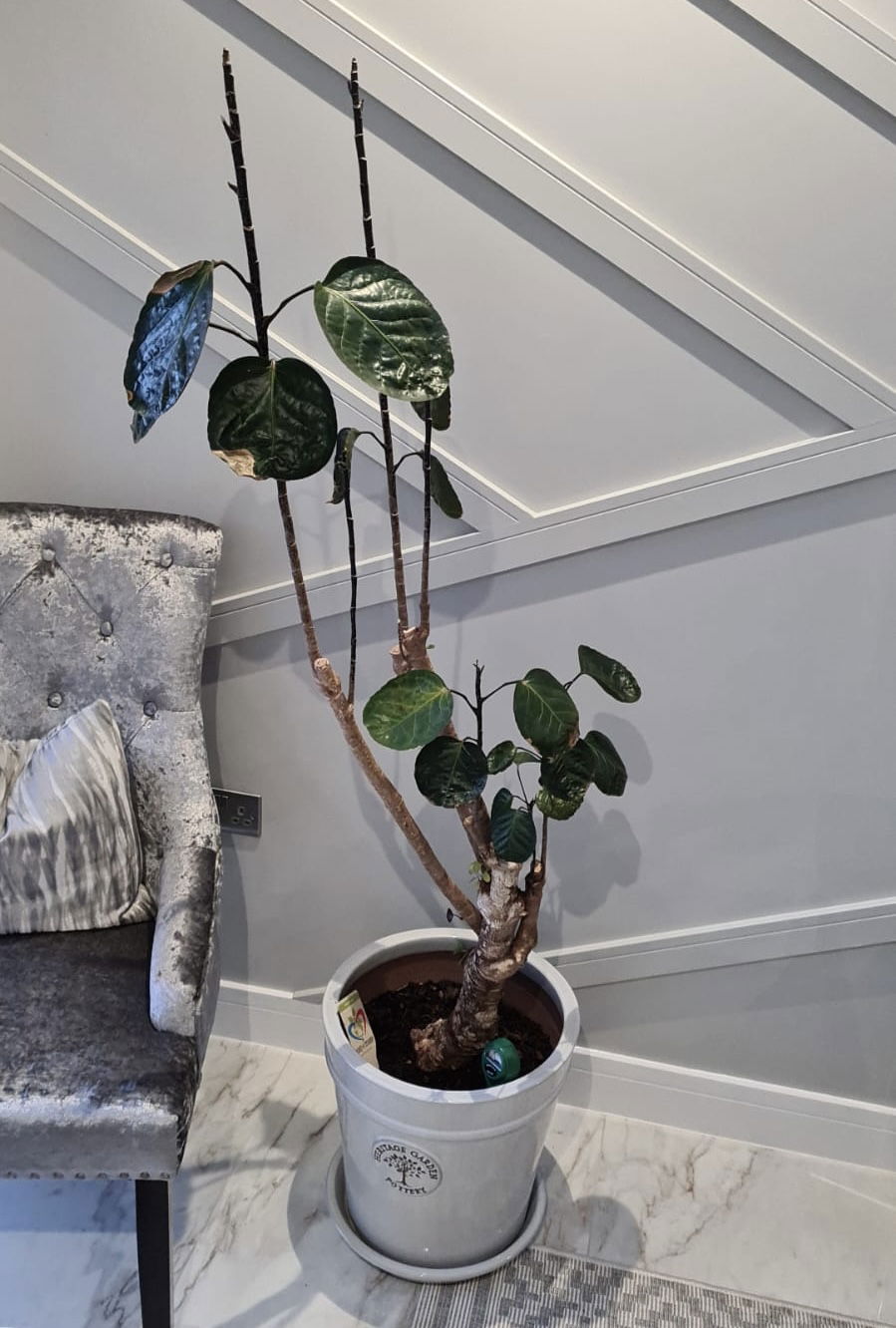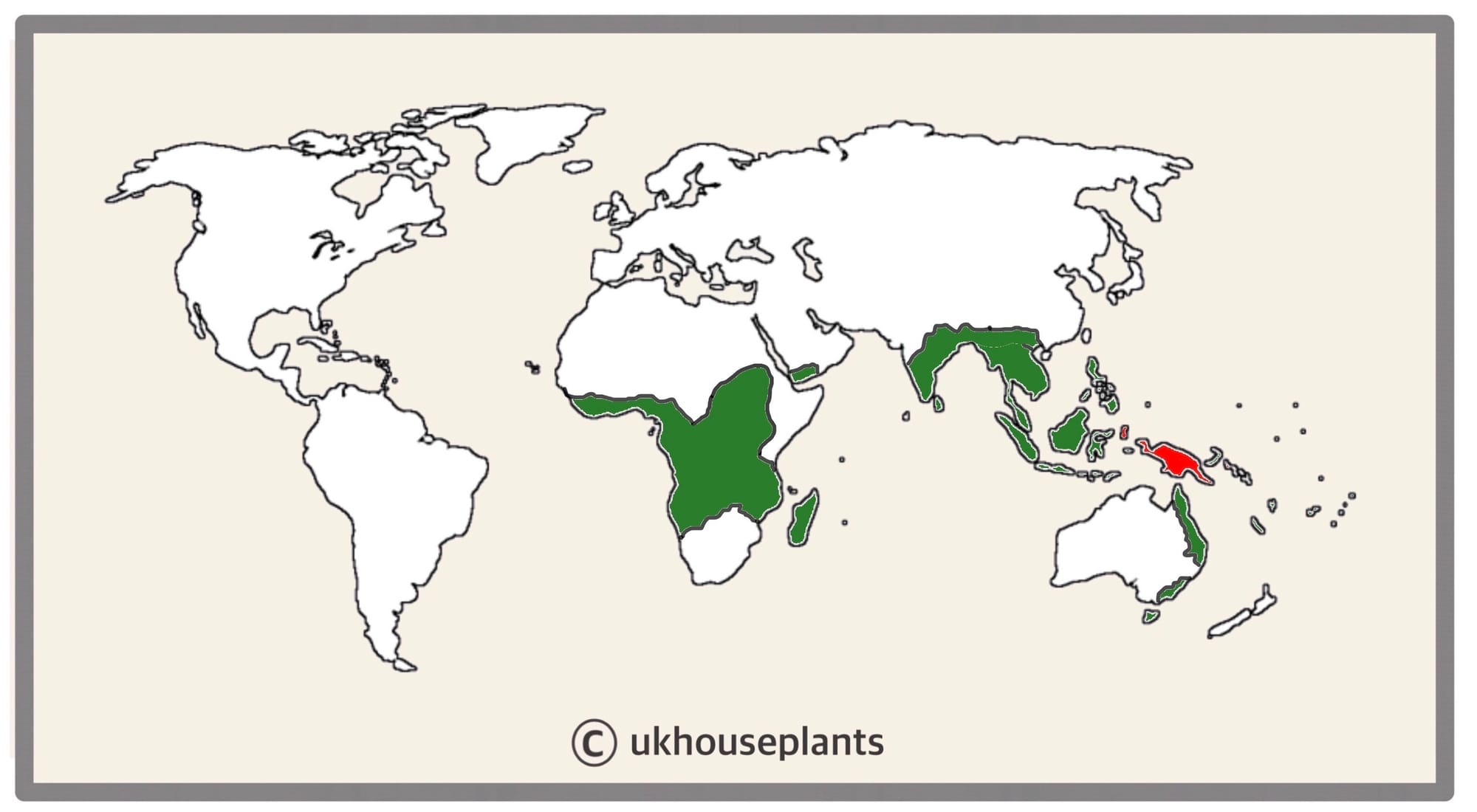
Polyscias scutellaria 'Fabian'
Contents
- Top Tips
- Location, Water, Humidity & Fertilisation
- Common Issues
- Origins, Temperature, Propagation, Repotting & Toxicity.
Need the answer to a specific plant query? Book a 1-to-1 video call with Joe Bagley, the website's friendly author, to overcome and address your niggling problem! Available on iMessage, WhatsApp, Facebook Messenger & more.
Top Tips & Info
- Care Difficulty - Moderate
- Situate Polyscias in a location that presents a few hours of off-peak sunlight in morning or evening, especially in the winter.
- Water once the top few inches of the soil dries out, reducing this further in the autumn and winter.
- Provide a humid location by introducing a pebble tray to keep the surrounding moisture high and stable throughout the year.
- Fertilise using a 'Houseplant' labelled feed every four waters in the spring and summer, reducing this to every six in the colder months.
- Regularly check for pests, most notably Mealybugs and Spider Mites that'll be located in the foliage's cubbyholes.
- Repot every two years using a 'Houseplant' potting mix and the next sized pot.
Location & Light - 🔸🔸
A location with around two hours of morning or evening sun is ideal for this plant. Although the sunlight is highly beneficial for its health, over-exposure will result in sun-scorch that'll lead to bleached leaves. Alternatively, avoid situating one in an overly shady location that's several metres from a window due to the heightened chance of root rot and mouldy soil. If you're worried about its setting being too dark, if a newspaper can be read while having your back towards the light source, you're good to go.
A room that offers a few hours of either morning or evening sun is vital for good, quality growth; examples of this are near to a south-facing window, or in a conservatory. Avoid locating the specimen more than four metres away from a north-facing window to downplay the risk of over-watering.
Water - 🔸🔸
An under-watered Polyscias is only slightly better than an over-watered one. Once around a third of the soil begins to dry, give the plant another good water, allowing the excess water to drain freely beneath. Always use lukewarm water, and if you choose to use tap water, allow it to stand for at least 24hrs before application. The roots systems tend to be quite sensitive to temperature change, so pouring cold tap water immediately into the pot will not only alienate your roots, but it could even damage the plant's overall health. Under-watering symptoms include curling or yellowing leaves and sudden lower leaf loss; these issues are either due to much needed repot, forgetfulness or too much sunlight/heat. Over-watering symptoms include rapidly yellowing leaves, stunted growth and a collapsed stem. Over-watering is commonly caused by too little light/heat or a lack of dry soil in between irrigations. For cases of root rot, be sure to click on this link.
Humidity - 🔸🔸🔸
Create a humidity tray to provide a moist and stable environment for your plant. If the surrounding saturation is too low or the heat too high, its foliage may start to brown over and curl, especially in direct sunlight. Hose the foliage down from time to time to hydrate the leaves and keep the dust levels down.
Fertilisation - 🔸🔸
Feed every four waters during the growing period and every six in the autumn and winter, using a 'Houseplant' labelled fertiliser. Avoid over-supplementation as a combination of excess fertiliser salts and burning roots will significantly affect its overall health.
 If you're forgetful with watering or battling with dry air, why not fill the decorative pot's bottom sixth with small grit? This will promote more reliable soil moisture that'll help encourage better growth & all-round health as the excess moisture will drain from the plant's plastic pot, thus creating a humid environment for root interaction.
If you're forgetful with watering or battling with dry air, why not fill the decorative pot's bottom sixth with small grit? This will promote more reliable soil moisture that'll help encourage better growth & all-round health as the excess moisture will drain from the plant's plastic pot, thus creating a humid environment for root interaction.
Common Issues with Polyscias (Dinner Plate Aralia)
If you still can't find the answer to your specific houseplant problem, book a 1-to-1 video call with Joe Bagley to point you in the right direction today.
Inconsistent watering which involves droughts and then subsequent water-logging will not be accepted by a Polyscias, resulting in root rot, foliage decline and stunted growth. If you're a forgetful gardener, set up a watering-rota so that it prompts you to re-hydrate efficiently.
Root rot is another common issue among specimens sat in too dark environments with prolonged soil moisture. Symptoms include rapidly yellowing older leaves, flaky bark that can be pulled from the stem, mouldy soil, stunted growth and a rotten brown base. Take the plant out of the pot and inspect health below the soil line. If the roots sport a yellow tinge, you're good to go, but if they're brown and mushy, action must be taken immediately. More information about addressing root rot can be found on this link.
 Polyscias have a delicate root system that can easily lead to root rot when over-watered. Here is a case of mild root rot.
Polyscias have a delicate root system that can easily lead to root rot when over-watered. Here is a case of mild root rot.
If the bark feels 'loose' or can be easily pulled from the stem, this may be an issue of root rot (through over-watering) where the disease has travelled up the stem. Although there's nothing that can be done to save the mother plant, you'll still be able to take stem cuttings to keep the plant's 'legacy' alive. Scroll down to 'Propagation' below to learn more.
If your specimen is located in a dark environment with mould developing on the soil's surface, use a chopstick to stab the soil in various areas gently. You should aim to enter the compost between the base of the plant and the pot's edge, as failure to do so may lead to damaging its lower portion. Leave the holes open for a few days before re-surfacing the soil to avoid it becoming overly dry. Not only will the gentle shift in the soil's structure mimic the work of small invertebrates in the wild (worms, etc.), but it'll also add oxygen back into the soil, thus reducing the risk of root rot. Repeat this monthly, or whenever you feel the potting-mix isn't drying out quickly enough.

Lower leaf loss is a common and significant issue among gardeners. This unfortunate phenomenon could be a product of several different problems, most notably being dark locations, water-related abuse or environmental shock. Relocate the plant to a more brighter room within 2m of a window, or in a semi-shaded conservatory and feed every third water to bump up its overall energy levels. In most cases, your Polyscias may just be losing leaves due to environmental shock, where the conditions found in the nursery or garden centre is different to your home. If you'd like to speak to ukhouseplants regarding this issue, book a 1-1 session with Joe Bagley (THE HOUSEPLANT DOCTOR™) to help guide you through the step-by-step process!
Spider Mites are small, near-transparent critters, that'll slowly suck out the chlorophyll out of the leaves. Have a check under the leaves, most notably along the midrib, for small webs and gritty yellow bumps. Click here to read our article about the eradicating Spider Mites, along with some extra tips that you may not find elsewhere!
Too low humidity can cause browning tips with yellow halos on juvenile leaves. Although this won't kill your specimen, you may want to increase the local moisture to prevent the new growth from adopting these symptoms. Mist or rinse the foliage from time to time and create a humidity tray while the heaters are active to create a stable environment. The browning of leaf-tips on older leaves is wholly natural and is the product of extensive photosynthesis during its life.
Origins
The genus, Polyscias, was first described in 1775 by Georg & Johann Forster during a year-long voyage around the world with Captain James Cook. This trip proved fundamental for the popularity and demand for Pacific plants, with Norfolk Pines & Kentia Palms becoming popular throughout the 19th-century. The name Polyscias derives from Greek, with 'poly' meaning many and the 'scias' translating to shade, in reference to their growth habits.
The most popular species, P. scutellaria 'Fabian', was initially classified 'Crassula scutellaria' by Nicolaas Burman in 1768, before switching genera until its final resting place in Polyscias in 1948. 'Scutellaria' is derived from Latin, translating to 'a small dish, tray or platter", which is in reference to the shape of the calyx.
 The Distribution of Polyscias in Green & P. scutellaria in Red.
The Distribution of Polyscias in Green & P. scutellaria in Red.
Temperature
15° - 32°C (59° - 90°F)
H1a (Hardiness Zone 13) - must be grown indoors or under glass all year round. Never allow temperatures to dip below 15℃ or permanent damage may occur in the likes of flower loss, stunted growth and yellowed leaves.
Spread
Up to 2m in height and 0.7m in width. The ultimate height will take between 5 - 10 years to achieve, with 8cm of new growth per season.
Pruning & Maintenance
Remove yellow or dying leaves, and plant debris to encourage better-growing conditions. While pruning, always use clean scissors or shears to reduce the chance of bacterial and fungal diseases. Never cut through yellowed tissue as this may cause further damage in the likes of diseases or bacterial infections. Remember to make clean incisions as too-damaged wounds may shock the plant, causing weakened growth and a decline in health.
Propagation
Via Seed or 'Stem & Eye' Cuttings.
Stem & Eye Cuttings (Moderate) - This method of propagation is troublesome without the aid of bottom-heat and a controlled environment. Choose the healthiest, most established stems that are wooded, yet still juvenile enough to bend slightly, being just thicker than a pencil. Each cutting should only have ONE leaf, and a small portion of the stem to either side of the node. Cut directly below a node using a clean knife to reduce bacteria count. Situate the cutting into moist 'Houseplant' compost, with the only the leaf sticking out of the soil. Blackleg can occur when the bottom wound becomes infected, resulting in propagation failure - typically caused by water-logging or a too-damaged wound. Maintain bright light and evenly moist soil with the avoidance of direct sunlight or cold draughts. Wrap the pot (& foliage) in a transparent bag or within a miniature greenhouse, and provide bottom heat of temperatures above 18°C (54°F). Remove the bag and place into individual 7cm pots once the second new leaf emerges. Follow the same care routines, as mentioned in the article's top half. This method will take up to five months, so patience and the correct environment are paramount for success!
Flowers
Although Polyscias will produce small clusters of white flowers during spring or summer, it's highly unusual for them to bloom in a domestic environment.
Repotting
Repot every three years in the spring using a 'Houseplant' labelled compost and the next sized pot with adequate drainage. Hydrate the plant 24hrs before tinkering with the roots to prevent the risk of transplant shock. For those that are situated in a darker location, add a thin layer of small grit in the pot's base to improve drainage and downplay over-watering. Click here for a detailed step-by-step guide on transplantation, or via this link to learn about repotting with root rot.
Book a 1-to-1 video call with Joe Bagley if you'd like a personal guide to repotting your houseplant. This will include recommending the right branded-compost and pot size, followed by a live video call whilst you transplant the specimen for step-by-step guidance and answer any further questions!
Pests & Diseases
Keep an eye out for mealybugs, spider mites, scale, thrips & whitefly that'll locate themselves in the cubbyholes and undersides of the leaves. Common diseases are root rot, leaf-spot disease, botrytis, powdery mildew & southern blight - click here to learn more about these issues.
Toxicity
This plant is classified as poisonous. If parts of the plants are eaten, vomiting, nausea and a loss of appetite could occur. Consumption of large quantities must be dealt with quickly - acquire medical assistance for further information.
Retail Locations
IKEA, Dobbies, Online Stores.
Book a 1-to-1 Call with Joe Bagley
If you need further advice with your houseplants, book an advice call with ukhouseplants' friendly and expert writer today! This can be done via a video or audio call on most apps, including Facebook, FaceTime & Skype. A ten-minute call costs £5.99 (US$7), or £15.99 for thirty minutes. You can ask multiple questions, including queries on plants, pests, terrariums, repotting advice and anything in between. Please consider supporting this service to keep ukhouseplants thriving!